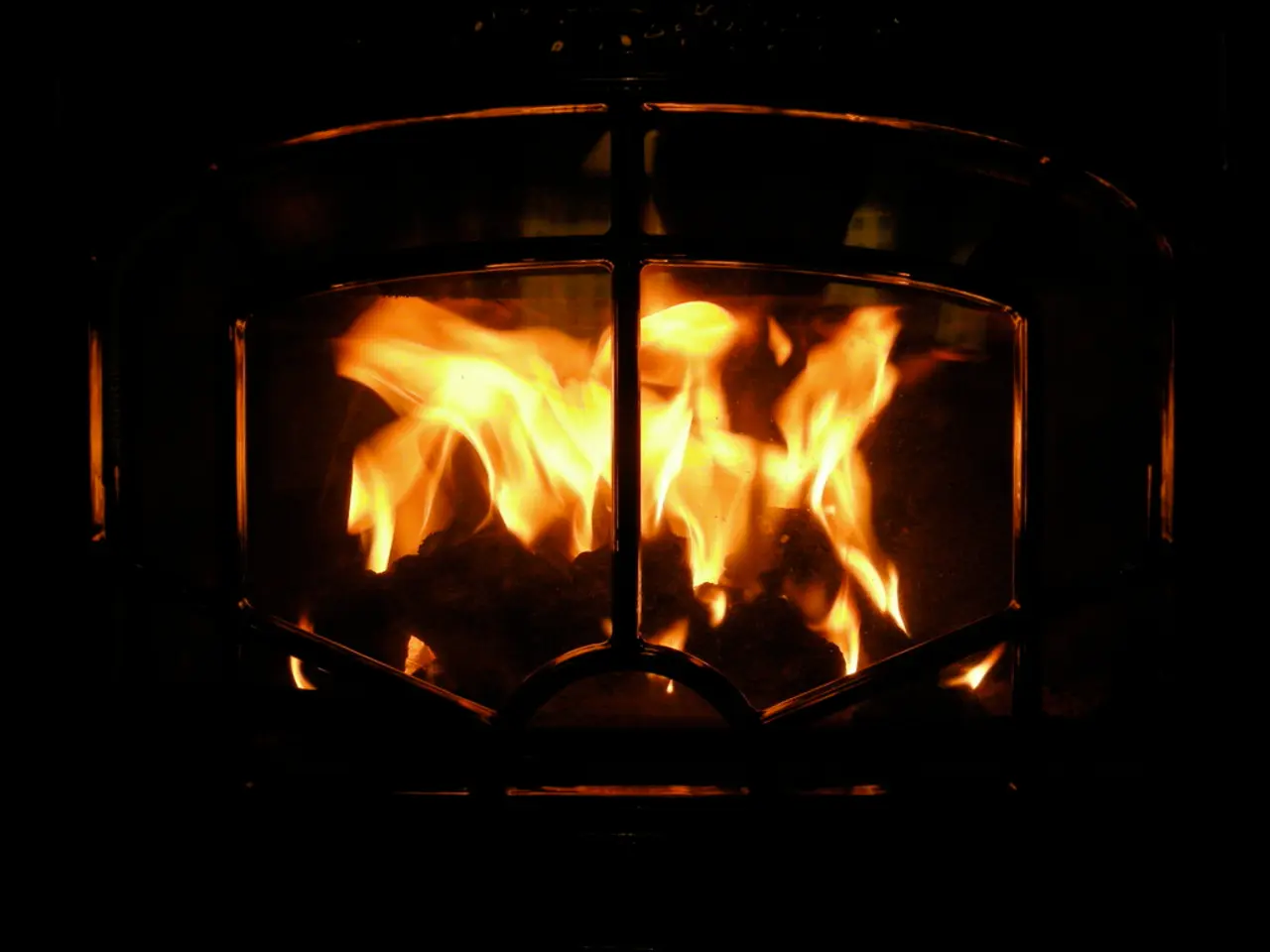Understanding Air Conditioning Varieties: Exploring Your Cooling Options as Temperatures Soar
In the face of rising temperatures and increasing discomfort, the demand for air conditioning systems in homes is on the rise. Homeowners now have a variety of options to choose from, each with its own advantages and disadvantages. This article provides a detailed comparative overview of four popular air conditioning systems: split systems, multi-split systems, portable units, and ducted systems.
**Efficiency, Cost, Noise Level, and Installation Complexity**
| System Type | Efficiency | Cost (Upfront & Running) | Noise Level | Installation Complexity | |----------------------|--------------------------------------------------------------------------------------------------|--------------------------------------------------------------------------------------------------|------------------------------------------------------------------------------------------------|---------------------------------------------------------------------------------------------------------------------| | **Split Systems** | High energy efficiency due to no duct losses; inverter technology in mini-splits adjusts compressor speed to reduce unnecessary energy use[2][4]. Ideal for targeted cooling with minimal standby loss[1]. | Lower initial equipment cost per zone; lower running cost by only running units in use[1][2]. | Indoor units very quiet (19–30 dB, similar to whisper); outdoor units 40–60 dB (like light rainfall)[2]. Quiet operation overall. | Simple two-component installation with short pipe runs; minimal structural work; quick electrician setup[1][2]. | | **Multi-Split Systems**| Similar efficiency to split systems, but can cool multiple zones with one outdoor unit, helping save outdoor space; advanced inverter tech further enhances efficiency[2][4]. | Moderate to high upfront cost depending on number of indoor units; saves cost compared to multiple single split units outside. Running costs efficient when used for multiple rooms/zones. | Indoor units similarly quiet as single split units; noise depends on number of indoor units. Outdoor noise shared among multiple zones. | Installation is more complex than single splits due to multiple air handlers connected to one outdoor unit; requires professional design and installation. | | **Portable Units** | Least efficient among the four types; higher energy consumption as portable units often rely on room air recirculation and have less effective heat exchange; no inverter tech[3]. | Low upfront cost; generally higher running costs due to inefficiency[3]. | Usually noisier—often 50–60+ dB because all components are inside the room[3]. | Very simple installation; just plug in and vent exhaust through a window or wall opening. No professional setup needed.| | **Ducted Systems** | Efficient for whole-home cooling; can balance airflow evenly across many zones if ducts well insulated; some energy loss occurs in ducts if poorly maintained. Modern systems have improved efficiency with zoning dampers and smart controls[1][4]. | High equipment and labor cost; installation involves multiple trades; higher upfront investment; running cost can be high if many zones are unused but energy wasted through ducts[1]. | Indoor noise is low as vents are discreet; outdoor unit noise is centralized but can be noticeable; overall quieter indoors as main equipment hidden[1]. | Most complex installation: requires ductwork, ceiling/floor modifications, multiple trades, and longer installation time[1][4]. |
**Pros and Cons**
- **Split Systems** + *Pros:* High energy efficiency; lower initial cost; low noise; easy installation; good for zoning small to medium spaces. + *Cons:* Visible indoor units; outdoor units needed per zone which can clutter exterior.
- **Multi-Split Systems** + *Pros:* Efficient multi-room cooling with single outdoor unit; flexible zoning; quieter operation. + *Cons:* More complex and higher installation cost than single split; system design crucial; limited by outdoor unit capacity.
- **Portable Units** + *Pros:* Cheapest and easiest to install; portable and flexible for temporary use. + *Cons:* Least efficient and more expensive to run; noisy and less effective cooling; bulky indoor presence.
- **Ducted Systems** + *Pros:* Whole-home cooling with concealed vents; clean aesthetics; excellent for large homes; central control. + *Cons:* High installation cost and complexity; potential duct losses; higher running cost if many zones unused; maintenance includes duct cleaning.
**Recommendation**
- For **targeted, energy-efficient cooling** with moderate upfront cost and noise considerations, **split or multi-split systems** are preferable. - For **whole-home, discreet cooling** and comfort with budget for installation and maintenance, **ducted systems** are ideal. - For **temporary or very low upfront cost needs**, **portable units** serve but with compromises in efficiency and noise.
When deciding between wall-mounted and portable air conditioning, consider how much you will use your system and its running costs. Portable air conditioning units offer the option of occasionally cooling a room without a significant investment, but their cooling potential is generally limited to small rooms. Prices for portable air conditioning units range from £200 to £600.
Ducted systems are more suited to new builds or larger renovations where you can plan the infrastructure in. Installation for multi-split systems usually starts at around £3,000, while installation costs for split systems usually start from around £1,200 to £2,500, depending on the unit size and setup complexity.
Ducted systems often use heat pump technology and feature an outdoor unit and single indoor unit fitted within the loft space or sometimes in a basement. Multi-split systems connect several indoor units to one outdoor compressor, providing room-by-room control and better energy efficiency. Portable air conditioners appear cheaper upfront but can be more expensive over time due to operating costs. They plug in and vent through a window, making them designed for temporary or rented spaces where installation is not possible.
- In the context of rising home temperatures, homeowners can consider various options for air conditioning, including split systems, multi-split systems, portable units, and ducted systems, each with its advantages and disadvantages in terms of efficiency, costs, noise level, and installation complexity.
- Split systems offer high energy efficiency due to no duct losses, quiet operation, and simple installation, while multi-split systems provide efficient multi-room cooling with a single outdoor unit.
- Portable units are the least efficient among the four types, but they offer the convenience of being portable and flexible for temporary use, with low upfront cost and simple installation.
- Ducted systems, on the other hand, offer whole-home cooling with concealed vents and clean aesthetics, making them ideal for large homes with a budget for installation and maintenance.
- When deciding between wall-mounted and portable air conditioning, factors such as usage frequency, running costs, and the size of the room should be considered.
- Portable air conditioning units are suitable for occasional cooling of small rooms, with prices ranging from £200 to £600.
- Ducted systems are more suitable for new builds or larger renovations where the infrastructure can be planned, and installation costs for multi-split systems usually start at around £3,000, while split systems typically start from around £1,200 to £2,500.
- Ducted systems and multi-split systems often utilize heat pump technology, with ducted systems featuring an outdoor unit and single indoor unit typically installed in the loft or basement, while multi-split systems connect several indoor units to one outdoor compressor. Lifestyle, home-and-garden design, gadgets, technology, kitchen, doors, heating, insulation, and budget should also be considered when building or remodeling a home to promote energy efficiency and comfort.




